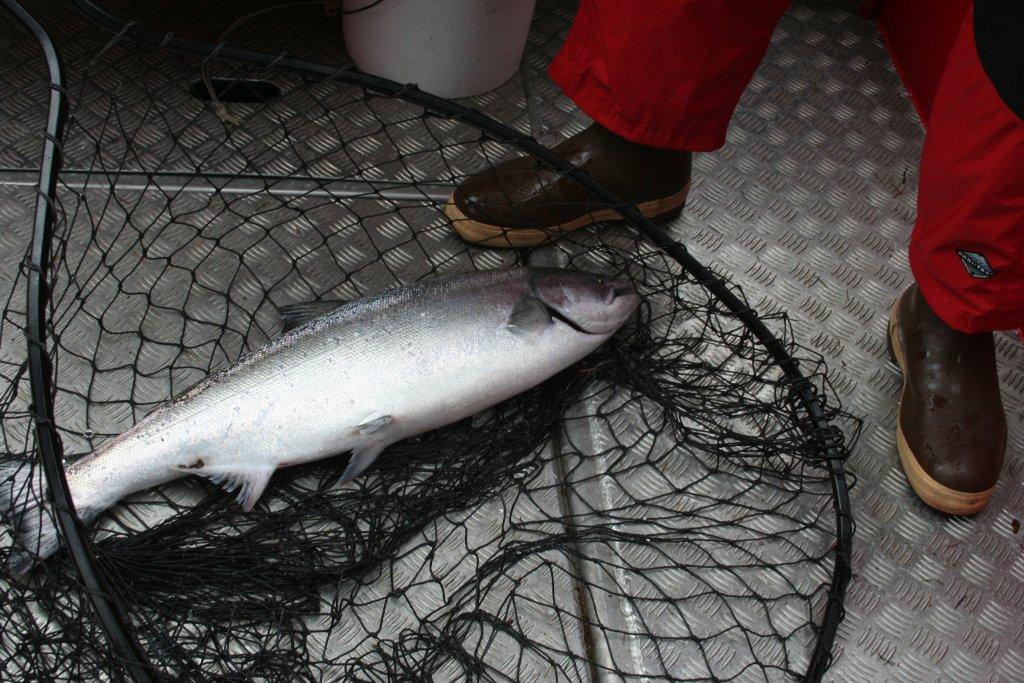Blackmouth? or Springer!!! 1
Every year towards the tail end of the Puget Sound blackmouth season some larger chinook enter the catch.
These are the slabs we all seek on derby day but very few of us consistently catch. The situation is complicated by the fact that catches & fishing effort during the "doldrums" of winter chinook season are at a seasonal low and reports are scarce. Plain and simple, it's a challenge to head out when the reports are sketchy and expect to have success.
On March 3rd, some friends and I headed out of Everett deciding to make our own report , dodging driftwood all the way out to Midchannel Bank. Pretty flat run, and when we got there…NO BOATS!!!
This was the very first time I've had the Bank all to myself and I told my compadres "Guys, this is either a good thing…or a GREAT THING!"
As soon as we got to trolling the Lowrance just lit up! Bait and fish top to bottom, working birds, full fish arches… the works!!!
I was in candlefish mode on our first pass, fishing small spoons…no dice. On our second pass we switched over to herring and…. blammo!!!!
Terry Roberts boated this 15lb dandy springer in the boat and we lost another good fish as well.

How do we know it was a springer and not a blackmouth? Great question!!!
In my opinion, there are several ways to discern a blackmouth or feeder chinook from a prime returning adult or springer.
The first this I look at is size. Skinny little chinook need not apply. Once we get to the 10 or 12 pound range and the fish has a round, almost fat appearance, we're in the ballpark.
"Springer spec" number two: Scale loss. Once you get the fish in the net and on your deck (if it's a keeper), look for wide areas of missing scales.

If scales are flyin' with every flop… it's a nice fish… but it's probably not a springer. Other exterior clues are scarce although some anglers mention the lack of purple hues in the scale reflection spectrum.
Now we can place our prize on the cleaning table and really separate the blackies from the springers!

Internally, there are three main aspects we can look at to determine the maturity of the chinook in question. Namely, these are belly thickness, presence of internal organ fat and reproductive structure development.
To "borrow" from Jeff Foxworthy: If you take pictures of filets and fish guts… you might be a redneck!
When the belly appears to be the same thickness as the abdominal wall… it might be a springer.

If you can easily identify the reproductive structures beginning to develop (sperm sacs below the gut contents at the bottom of the pic) and the pyloric caece (the "spaghetti like" organ attached to the digestive tract which secretes digestive juices) is interspersed with fat…It might be a springer!!!

The bottom line is that there are a ton of springers headed for the Columbia and you would be a silly goose to miss out on that record run opportunity. However, just because you can't carve out the time to head to the Oregon/Washington border is no excuse to sit around home getting bored!
We've got the rest of March and most of April to score a "springer-mouth" in our saltwater playground: Puget Sound.
It's time guys!!! Get out there!


Nice fish nurm. That the only hit of the day? Oh yeah, pretty nice filet job!